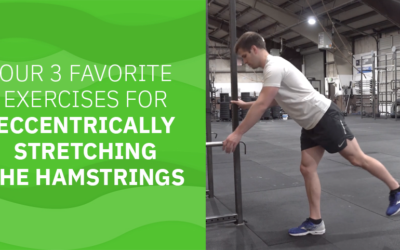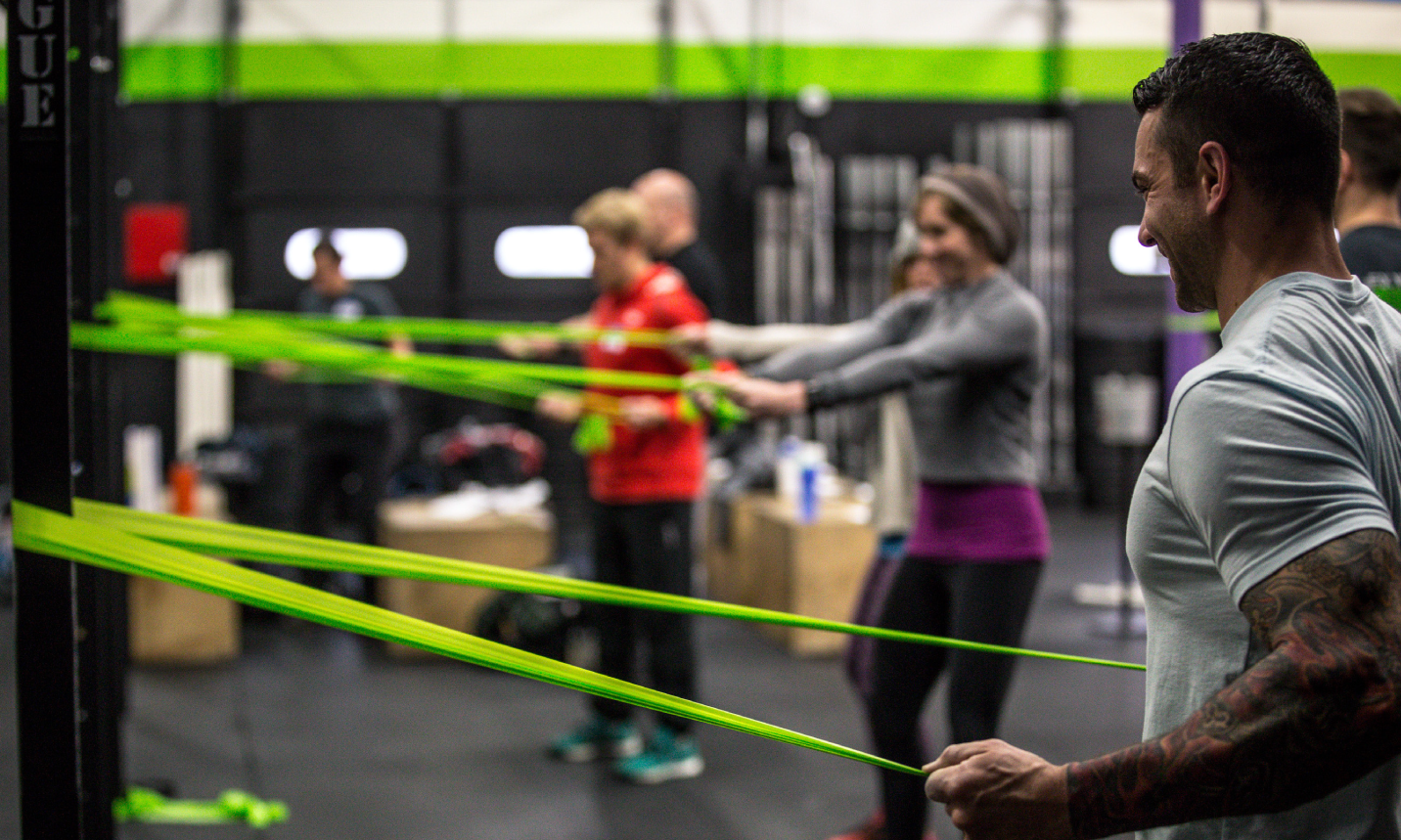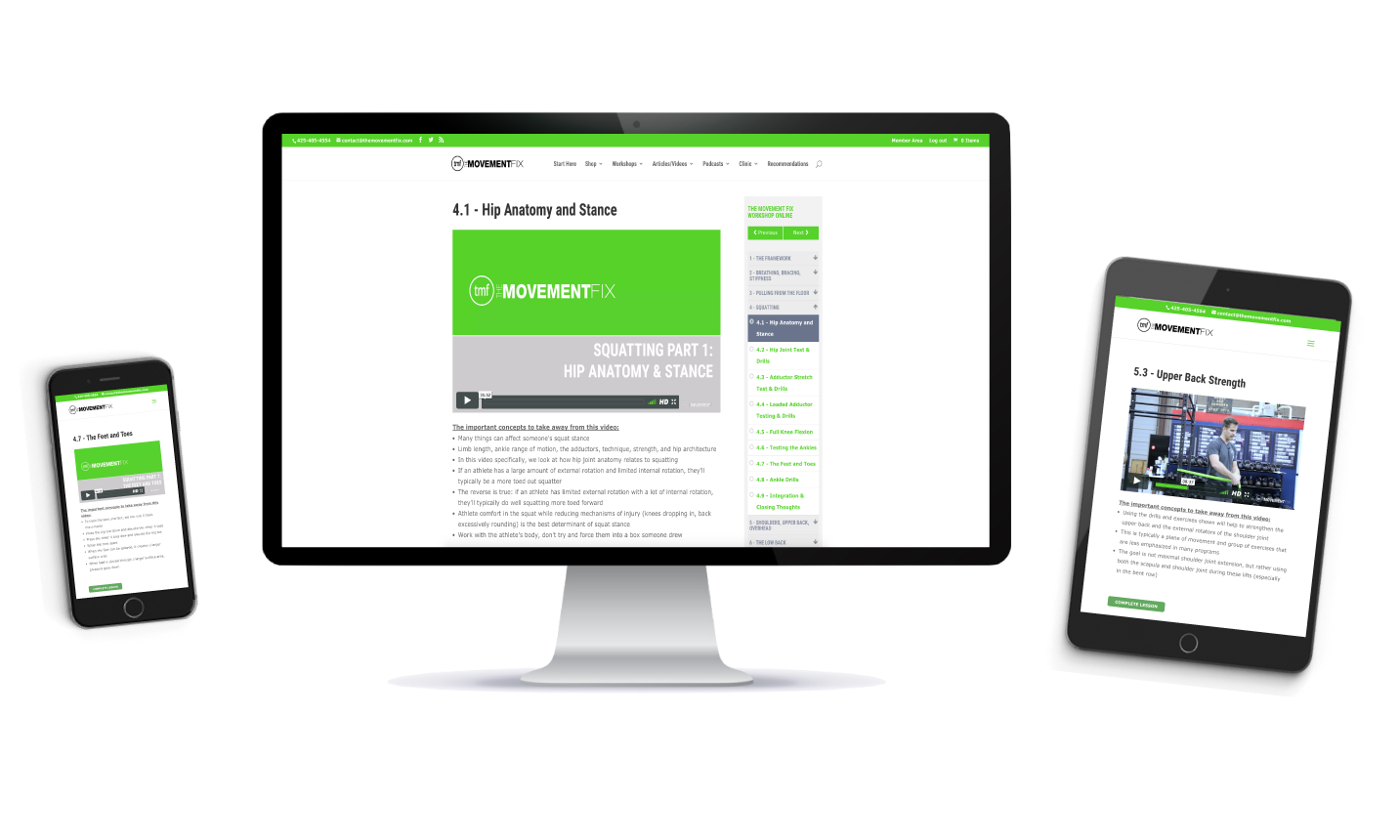Basic Anatomy of Stretching the Calves
*Updated 6/10/18
Check out The Movement Fix on Instagram @themovementfix
Introduction
It's important to know the basic anatomy around joints you are trying to mobilize because it may make you set up a stretch a certain way depending on what you're trying to accomplish.
A great example of this is the calves.
There are two muscles we primarily need to take a look at: the gastrocnemius (gastrocs) and soleus.
Both of these muscles combine to be your 'calf muscles' (or triceps surae if you want to be technical), which is how they are a group are commonly referred.
The biggest difference, attachment-wise, is that the gastrocs cross both your knee and ankle joint whereas the soleus crosses just the ankle joint.
Let's take a look at these muscles.
Need more hip and low back mobility? Start with Day 1 of our Hip/Low Back Mobility Program for free:
Basic Anatomy of the Calf Muscles
All the Muscles
In this photo, you're looking at the back of someone's lower leg. Generically you could say you are looking at the calf muscles.
There are multiple muscles in the lower leg and because they anatomically attach differently in your body, the way they are stretched is different.
For the purposes of this article, we will specifically look at the gastrocnemius and the soleus.
Gastrocnemius
In this photo we are looking at the gastrocnemius from the back on the left leg.
As you can see, it attaches above the knee and then blends into the achilles tendon. This means to stretch the gastrocs, you need to have your knee locked.
If you bend the knee more than ~20 degrees and try to stretch the gastrocs, you will most likely not be able to and instead you will be stretching the soleus.
This is important because when you squat, your knee is bent substantially, so the gastrocs aren't a limiter of ankle dorsiflexion.
Soleus
The soleus lies beneath the gastroc and is a large and broad muscle.
As you can see in the image, it does not cross the knee joint. It only crosses the ankle joint by way of the achilles tendon.
If your ankle range of motion is limited in squatting, it isn't because of your gastrocs, it's because of your soleus or the bony anatomy of your ankle joint, which requires joint mobilizations (as long as there are no bone spurs).
You can see a few of our recommended joint mobilizations for the ankle joint in our video on a banded ankle joint mobilization and our video on a self ankle joint mobilization. Sometimes athletes need to learn to load their ankle dorsiflexion, a commonly overlooked issue.
How to Stretch the Gastrocnemius
There are two basic ways to stretch the gastrocnemius muscles.
- You can stretch them when your leg is behind you by pressing against the wall and keep your knee locked
- You can stretch them by placing the foot of your front leg up against a wall, keep your knee locked, and push into the stretch
The key is that your knee needs to be kept straight.
How to Stretch the Soleus
Like the gastrocs, there are two basic ways to stretch the soleus, both are with the stretching side being the front leg:
- Position yourself near a wall, keep your foot flat, and bend your knee and drive it toward the wall
- Place your foot on the wall, bend your knee, then press your knee toward the wall
The key difference between the soleus stretch and the gastroc stretch is the knee will be bent.
If you feel it in the front of your ankle, don't push into the stretch, instead try a banded joint mobilization.
Summary
The calf is made up of primarily two muscles: the gastrocnemius and the soleus.
When squatting, the gastrocs won't limit your ankle range of motion. It's either a tight soleus, a stiff ankle joint, or it could be that you've reached the end of your ankle joint's range of motion due to the bones.
When stretching the gastroc, keep your knee locked. When stretching the soleus, bend your knee.
Other Things You Can Try
Still need help with your ankles and calves? Where are some other places to look for help:
1. How to Stretch Your Calves
2. Self-Ankle Mobilization
3. Banded Ankle Mobilization
4. Learning to load your ankle dorsiflexion
5. Full Squat Warm Up
6. Toe Dexterity
What to Read Next
Top 5 Exercises to Work On Your Hip Extension
Top 5 Exercises to Work On Your Hip ExtensionIntroductionIn this article, we will cover: What hip extension is The difference between global extension and hip extension The muscles that control the pelvis and the muscles being stretched when the hip joint is more...
Why Your Lower Back Hurts When Sitting and What to Do About It
Why Your Lower Back Hurts When Sitting and What to Do About ItIntroductionThere are a handful of reasons why your lower back may hurt while sitting, so it’s impossible for an article on the internet such as this to explain to you exactly why your back hurts, but since...
Our 3 Favorite Exercises for Eccentrically Stretching the Hamstrings
Need help with your hip/low back mobility? Download Day 1 of our Hip/Low Back Mobility Program: Our 3 Favorite Exercises for Eccentrically Stretching the Hamstrings Introduction In this article, you'll learn our 3 favorite eccentric exercises to stretch the...
Top 4 Hip Mobility Exercises
Need help with your hip/low back mobility? Download Day 1 of our Hip/Low Back Mobility Program: Top 4 Hip Mobility Exercises Introduction In this article, you'll learn the top 4 hip mobility exercises that we recommend and prescribe. But first, why 4 exercises? These...
Get all our latest articles sent directly to your inbox
Comments













[…] Basic Anatomy of Stretching the Calves […]
[…] to Squat Differently - Modify the Squat to Get Rid of Hip Pinching - Improve Squatting Mobility - Basic Anatomy of Stretching the Calves - A Better Way to Stretch Your Calves - Front Squat Mobility and […]
[…] is rolling out the calf muscles, which consist primarily of the gastrocnemius and the soleus. Click here to read more about the anatomy of the […]
[…] Basic Anatomy of the Calves 2. Banded Ankle Mobilization 3. Learning to load your ankle dorsiflexion 4. Full Squat Warm Up 5. […]
[…] Basic Anatomy of the Calves 2. Self-Ankle Mobilization 3. Banded Ankle Mobilization 4. Learning to load your ankle dorsiflexion […]
[…] Full range of motion: With every repetition of every calf exercise, you need to go all the way down past the level of your heels. Then pause, before, without bending your knees, going all the way back up to full extension. […]